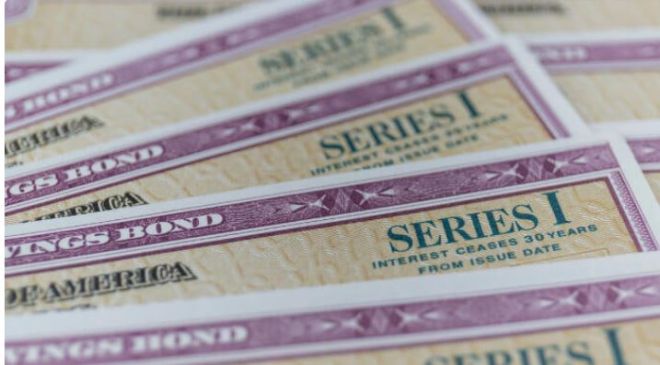With a yield of 9.62%, the recently expired Series I bond was understandably popular. With interest rates rising, bond funds are down this year and banks continue to offer miserly rates on deposit accounts. So it’s no wonder that a surging horde of investors crashed the Treasury.gov site at the end of last month, trying to beat the clock and lock in the highest rate the bonds have paid since they were introduced in 1998.
On the day of the Friday, Oct. 28 deadline to lock in the old rate, the Treasury sold $979 million of I bonds. In a bear market, this investment that offered robust yield and low risk got investors riled up.
But now it turns out that investors should have waited. Those who picked up new I bonds yielding 6.89% in the latest auction will find themselves making more money in a few years than those who rushed in to grab the old, higher rate. How is that possible? Take a deep dive into the intricacies of I Bonds below and consider matching with a financial advisor for free to see if I Bonds make sense in your portfolio.
How Can a 6.89% I Bond Rate Beat a 9.62% Rate?
The reason is that rates on I bonds are made up of two components: a guaranteed base rate and an adjustable inflation rate that changes with every new semi-annual auction. That eye-popping 9.62% rate was guaranteed only for the first six months that investors hold their bonds. After that, the rate will be heading down while the rate on the November 2022 bonds will be steadily staying up.
That’s because bonds purchased between May 1, 2020, and Oct. 31, 2022, came with a base rate of 0%. The new bonds are being issued with a base rate of 0.40%. The new inflation rate of 6.49% means all those previous investors will get just that rate of return, while buyers of the new bonds will get a composite rate that includes the base, giving them 6.89%.
Even better for the new bond buyers is that the base rate is guaranteed for the life of the bonds, which don’t mature for 30 years, giving those bondholders an added boost for as long as they hold on. Even if inflation drops to 0%, they’ll still get a return of 0.40%.
Amid the higher base rate, the buyers who got I bonds at the 6.89% rate should be ahead of buyers who locked in the 9.62% after about four years. It’s always important to ask an advisor about what makes sense for you in terms of growth and cash flow.
A Historical Glance at I Bonds
The first I bonds were issued in September 1998 with a base rate of 3.40%, which rose to 3.60% in May 2000, the highest ever. Since then, the guarantee has steadily declined, hitting 0% several times, including this latest, longest run from May 2020 until October. This means that anyone holding an I bond purchased between May 1, 2000, and Oct. 31, 2000, is enjoying a rate of 10.20% today, although that’s quite a come-down from the last six months when they were getting 13.39%.
Still, last-minute I bond buyers don’t have to feel too bad – they’ll get the 9.62% rate until the end of April, because the bonds pay the composite rate at the time of their auction for six months, starting on the first day of the month they were purchased. The inflation rate is adjusted twice a year at each auction, which takes place on May 1 and November 1.How Are I Bond Rates Calculated?

If you’re wondering exactly how I bond rates are calculated, it’s the sum of the fixed rate, plus twice the semi-annual inflation rate for the previous six months (in the latest auction, that’s the change in the Consumer Price Index from March to September). That result gets added to the sum of the fixed rate multiplied by the inflation rate. The entire calculation looks like this: [Fixed rate + (2 x semiannual inflation rate) + (fixed rate x semiannual inflation rate)].
Extensive information on I bond rates and how they’re calculated can be found here, while a historical chart of the entire history of each bond is published here.Bottom Line
In a truth that is quite counter-intuitive, investors who buy I Bonds at the new 6.89% rate may, after four years, come out ahead of investors who locked in the 9.62% rate that expired last month. Amid all the fanfare to try to catch that nearly 10% return, investors would have done well to exercise patience and factor in the base rate to the equation, which rose to 0.40% in this last offering.Tips on Fixed-Income Securities
- A financial advisor can help you pick fixed-income securities that complement your investment goals, timeline and risk profile. Finding a financial advisor doesn’t have to be hard. SmartAsset’s free tool matches you with up to three financial advisors who serve your area, and you can interview your advisor matches at no cost to decide which one is right for you. If you’re ready to find an advisor who can help you achieve your financial goals, get started now.
- Use our no-cost investment calculator to get a quick estimate of how your investments could be expected to grow over time.
- It’s possible to buy more than the $10,000 individual limit on I Bonds. Here’s how. Senators are also currently fighting to allow you to buy even more in I Bonds.









































